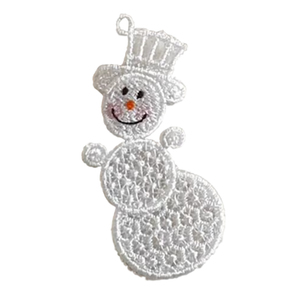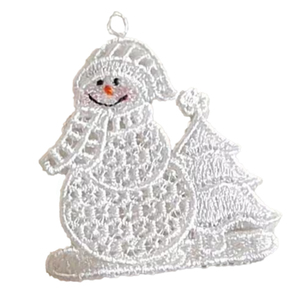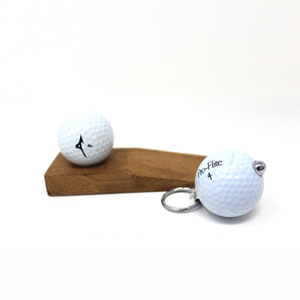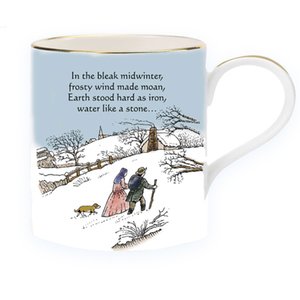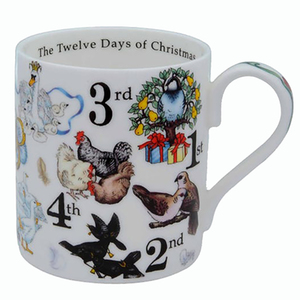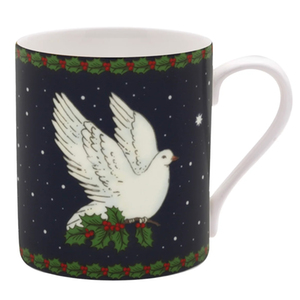
A little bit of History
The Christmas Stocking
 Relaxing by the fireplace decorated with holly, ivy and of course Christmas stockings brings back sweet memories of wonderful family Christmas traditions.
Relaxing by the fireplace decorated with holly, ivy and of course Christmas stockings brings back sweet memories of wonderful family Christmas traditions.
The hanging of stockings by the fireplace remains a popular Christmas custom. However, the fireplace is not the exclusive option, you can have your Christmas stocking hung on your doorknob, placed on a windowsill, or tied to a bedpost. Where you choose, when Christmas Eve arrives, St Nicholas, Santa Claus or Father Christmas (which ever you choose to call him) will find it anyway
Legend has it that the origin of Christmas stockings came from a small village where a once wealthy merchant and his daughters fell into poverty.
The villagers were overheard talking about the girls by the now-famous St.Nicholas as he passed through the village but was informed that their father would not accept any gifts or charity. He decided to help in secret. So one night he threw three bags of gold down the chimney which landed in the girls’ stockings which were hung by the fireplace to dry.
 When the girls and their father woke up the next morning they found the bags of gold and were overjoyed. The girls were able to get married and live happily ever after. Historically girls would have needed money as a dowry in order to get married.
When the girls and their father woke up the next morning they found the bags of gold and were overjoyed. The girls were able to get married and live happily ever after. Historically girls would have needed money as a dowry in order to get married.
The details of their story spread among other villagers, whose children also began hanging their stockings by the fireplace, hoping to receive presents from St. Nicholas at Christmas.
This led to the custom of children hanging stockings or putting out shoes, hoping they too would receive Christmas gifts from Saint Nicholas.
English Christmas Traditions
The Christmas Tree
While Christmas trees were already popular in northern Europe, the first one did not appear in the UK until the 1800s.<
Many people think this tradition in Britain started with the Victorians when Prince Albert put up a Christmas tree at Windsor Castle in 1841. However, the tradition actually dates back further than that.
It originally came from Germany, where Prince Albert was born, but was introduced to England during the Georgian period, when King George III was on the throne.
King George IIIs’ German wife Queen Charlotte, set up the first known English tree at Queens Lodge, Windsor, in December,1800.
Queen Victoria and Prince Albert are said to be the ones who made it popular and fashionable to decorate a tree at Christmas after a picture of Victoria's Christmas tree was shown in a London newspaper decorated with glass ornaments and baubles from her husband Prince Albert's native Germany which is why a lot of people think that they started the tradition in Britain.
During the Victorian times, Christmas trees were decorated with candles to remind children of the stars in the sky at the time of the birth of Jesus.
Today, candles have been replaced by the strings of coloured lights, to symbolise of the 'Light of the World'.
Christmas trees were also traditionally decorated with sweets and cakes hung with ribbon. It was not until 1880 that Woolworths first sold manufactured Christmas tree ornaments which proved to be very popular and took over as the traditional way to dress a Christmas tree .
Trafalgar Square Christmas Tree
Ever since 1947, Norway has donated a tree to London to say thank you for helping them during World War II.
A special ceremony is held in Norway in November, when the tree is cut down in the forest in Norway.
It is then put up in Trafalgar Square in London and decorated in the traditional Norwegian way, with strings of lights going down the tree, rather than criss-crossing it.
Turkey
Turkeys originated in Mexico and were first brought to Britain more than 500 years ago by William Strickland who acquired six birds from American Indian traders on his travels.
Before that, the meat of choice for Christmas was goose, boars' head and even peacock.
Henry VIII was the first king to eat turkey on Christmas day making it fashionable in high society, but it was not until the mid twentieth century that the turkey overtook the goose as the most popular Christmas Day meal.
However, even by 1930 it took a week’s wages to buy one and turkey remained a luxury until the 1950s.
Mulled Wine or Wassail Cup
The term “Wassail” in Anglo-Saxon means “Be Well” which was traditionally a greeting made at the start of the New Year.
The act of Wassailing - going door-to-door with a bowl of spiced alcoholic beverage - was performed on the “Twelfth Night,” (January 5, 6, or 17, depending on which calendar you go by) and met with replies of “Drink well.”
Depending on where you lived, Wassail was made with either wine or cider which would be heated up and mixed with various fruits and spices.
It is more commonly known as “mulled wine” nowadays which basically follows the wassail recipe.
Mulled Wine Recipe Ingredients
2 bottles of medium to full bodied red wine
1 orange stuck with cloves
2 oranges sliced
2 lemons sliced
6 level tea spoons of brown sugar
1 two inch piece cinnamon stick
2 level teaspoons of finely grated fresh ginger or ground ginger
10 to 12 gratings of nutmeg
2 star anise
2 tablespoons of Cointreau
Method
Put the sugar and enough wine to cover the sugar into a pan.
Heat and stir until all the sugar has dissolved then bring to the boil.
Add the Nutmeg, Star Anise Cinnamon Stick Ginger and Cloves
Keep on a rolling boil for about 4 to 5 minutes, or until you have a thick syrup.
Turn down the heat and stir in the rest of the ingredients until the fluid is warm
Do not boil or all the alcohol will evaporate.
This can be made in advance, then re-heated just before required.
Serve it warm in heatproof glasses
Holly and Ivy
Both holly and ivy were originally used in pre-Christian times to celebrate the winter solstice and ward off evil spirits.
When Christianity came into Western Europe Holly and Ivy became used as symbols of the faith
The prickly holly leaves represent the crown of thorns that Jesus wore when he was crucified, whilst the red berries are the drops of blood that were shed by Jesus because of the thorns.
The use of ivy which stays green throughout the year symbolizes eternal life and rebirth.
With its tendency to cling, Christians use ivy symbolically to remind them that they need to cling to God for support in their lives.
Mistletoe
Hanging mistletoe in the home is an ancient pagan practice adopted by early Christians. The word itself comes from two Anglo Saxon words ‘Mistel’ (which means dung) and ‘tan’ (which means twig or stick)! So you could translate Mistletoe as ‘dung on a stick!
The tradition of kissing under the mistletoe originated in England. Each kiss required a berry to be plucked until none remained.
The earliest mention of mistletoe's romantic powers was by Roman natural historian Pliny the Elder, who sneered at the Druids for believing that "mistletoe would impart fertility to all animals that are barren."
This was later expanded by the Norse myth about Baldur and his mother, Frigga, the goddess of love and marriage.
According to legend, Frigga got all the plants and animals of the Earth to promise not to harm her son—except mistletoe. Loki, the god of mischief, took that opportunity to kill Baldur with a spear made of mistletoe.
Frigga's tears then turned into mistletoe berries, which brought Baldur back to life, prompting Frigga to declare mistletoe a symbol of love.
Christmas Carols
Carols were songs and dances of praise and joy in pagan times and the practice of carol singing carried over into the Christian era.
Carols have been written through the centuries but the most familiar date from Victorian times. However, for thousands of years songs have been sung at the Winter Solstice - to celebrated and celebrate the turn from the shortest day towards longer ones.
The word 'carol' probably comes from the old French word 'carole', which - from around the mid-1100s - meant a popular circle dance accompanied by singing."
By the late Middle Ages, carols had become more associated with Christmas and the nativity with songs and dances of praise and joy.
Carols have been written through the centuries but the most are from Victorian times where there was a proliferation of writing, installing the virtues of Christianity
The Queen’s Speech now the Kings Speech
A traditional feature of the British Christmas afternoon was the Queen’s Christmas Speech.
At 3pm the Queen gave her Christmas Message to the nation which is broadcast on radio and television, both to the nation and throughout the British Commonwealth, this is a tradition which has been continued by King Charles III.
The idea for a Christmas message from the sovereign to the British Empire was proposed in 1932 by Sir John Reith, the “founding father” of the British Broadcasting Corporation (BBC), as a way to establish the Empire Service (now the World Service).
George V was the first monarch to broadcast a Royal Christmas Message and it then took another 25 years for the first Queen’s Christmas Speech to be televised.
In 2007 Queen Elizabeth II launched her own channel on YouTube, which featured the message.
The launch marked the 50th anniversary of the Queen’s first televised festive address which you can visit at: https://www.youtube.com/user/TheRoyalChannel
The Paper Crown
Boxing Day
Pantomime
Traditionally performed around Christmas time. Pantomime literally means “all kinds” of “mime” (panto-mime).
It features men dressed as women, and women masquerading as men presenting a tale of good and evil, where hope triumphs over adversity after danger and virtual despair all based on common fairy tales such as Cinderella, Aladdin and Snow White.
Thought to have evolved from the Italian commedia dell'arte tradition. meaning ‘comedy of the artists’ where in the 16th Century Small companies toured in Italy and France, setting up in market places and fairgrounds telling improvised stories of the old man Pantalone, the clown Pierrot, and Columbine - the girl in love with the naughty servant Arlecchino.
The actors often wore distinctive masks which enabled audiences to recognise the characters they were playing but also allowed the actors to make topical and risqué jokes without fear of being recognised.
Father Christmas
A Visit from St. Nicholas
Not a creature was stirring, not even a mouse;
The stockings were hung by the chimney with care,
In hopes that St. Nicholas soon would be there;
The children were nestled all snug in their beds;
While visions of sugar-plums danced in their heads;
And mamma in her 'kerchief, and I in my cap,
Had just settled our brains for a long winter's nap,
When out on the lawn there arose such a clatter,
I sprang from my bed to see what was the matter.
Away to the window I flew like a flash,
Tore open the shutters and threw up the sash.
The moon on the breast of the new-fallen snow,
Gave a lustre of midday to objects below,
When what to my wondering eyes did appear,
But a miniature sleigh and eight tiny rein-deer,
With a little old driver so lively and quick,
I knew in a moment he must be St. Nick.
More rapid than eagles his coursers they came,
And he whistled, and shouted, and called them by name:
"Now, Dasher! now, Dancer! now Prancer and Vixen!
On, Comet! on, Cupid! on, Donner and Blitzen!
To the top of the porch! to the top of the wall!
Now dash away! dash away! dash away all!"
As leaves that before the wild hurricane fly,
When they meet with an obstacle, mount to the sky;
So up to the housetop the coursers they flew
With the sleigh full of toys, and St. Nicholas too—
And then, in a twinkling, I heard on the roof
The prancing and pawing of each little hoof.
As I drew in my head, and was turning around,
Down the chimney St. Nicholas came with a bound.
He was dressed all in fur, from his head to his foot,
And his clothes were all tarnished with ashes and soot;
A bundle of toys he had flung on his back,
And he looked like a pedler just opening his pack.
His eyes—how they twinkled! his dimples, how merry!
His cheeks were like roses, his nose like a cherry!
His droll little mouth was drawn up like a bow,
And the beard on his chin was as white as the snow;
The stump of a pipe he held tight in his teeth,
And the smoke, it encircled his head like a wreath;
He had a broad face and a little round belly
That shook when he laughed, like a bowl full of jelly.
He was chubby and plump, a right jolly old elf,
And I laughed when I saw him, in spite of myself;
A wink of his eye and a twist of his head
Soon gave me to know I had nothing to dread;
He spoke not a word, but went straight to his work,
And filled all the stockings; then turned with a jerk,
And laying his finger aside of his nose,
And giving a nod, up the chimney he rose;
He sprang to his sleigh, to his team gave a whistle,
And away they all flew like the down of a thistle.
But I heard him exclaim, ere he drove out of sight—
“Happy Christmas to all, and to all a good night!”
Christmas Stocking Fillers
Select Your Currency:

